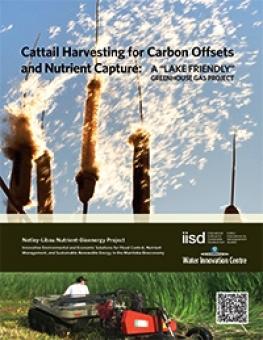
Cattails Harvesting for Carbon Offsets and Nutrient Capture: A "Lake Friendly" greenhouse gas project
The Cattail Biomass Harvesting project is pursuing and evaluating the commercial-scale harvesting of cattail (Typha spp.) for its multiple co-benefits, in particular:
- Nutrient capture (i.e., phosphorus) through harvesting of nutrient-rich biomass to reduce phosphorus loading to Lake Winnipeg
- Use of harvested biomass as a viable feedstock for bioenergy to displace coal used for heating
- Certification of cattails through the voluntary market for generation of carbon offset credits
- Demonstration of commercial-scale agricultural equipment for harvesting in wet environments
This progress report details the project background, descriptions of current cattail biomass harvest sites, a proposed plan for commercial-scale cattail harvesting, and opportunities for carbon offset markets and certification. It concludes with a legislative and regulatory review for cattail harvesting in Manitoba. The Cattail Biomass Harvesting project, a component of the International Institute for Sustainable Development's ongoing Netley-Libau Nutrient-Bioenergy Project, is co-funded by Manitoba Lotteries, Manitoba Conservation Department of Water Stewardship and Manitoba Hydro.
You might also be interested in
Large Area Planning in the Nelson-Churchill River Basin (NCRB): Laying a foundation in northern Manitoba
This report explores two trends—the growing tendency towards large basin management and consideration of ecosystem services in decision making—for the northern portion of the Nelson-Churchill River Basin in Canada.
Large Area Planning in the Nelson-Churchill River Basin (NCRB): Laying a foundation in northern Manitoba (Summary)
This document summarizes a longer report that explores two trends—the growing tendency towards large basin management and consideration of ecosystem services in decision making—for the northern portion of the Nelson-Churchill River Basin in Canada.